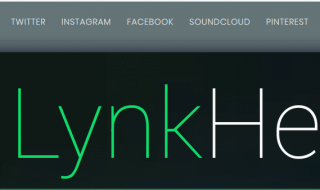Managing and optimizing a website can be tricky, to say the least, especially in this day and age. Just when you thought you managed to successfully juggle various site elements, something unexpected may add to your already impressive list of issues.
When it comes to SaaS websites, the obstacles are even greater. The global revenue of the SaaS market is expected to surpass a whopping $113 billion by the end of 2021!
Let’s just say that the “competitive ecosystem” is an understatement, as optimizing for conversions and putting your business in front of the right customers can be extremely demanding.
Building a conversion rate optimization strategy is the first step towards the ultimate goal – increasing revenue.
There’s no bulletproof plan when it comes to optimizing your SaaS conversion rate.
Some practices, however, are more efficient than others. Together, with one of the best web design agency New York, we’ve singled out the ones every SaaS business should follow when building a high-converting website.
Conversion Rate Optimization in SaaS Businesses
Before we start, what is SaaS exactly? Software as a Service is a cloud-based service where, instead of downloading a software suite, you access and use it online.
The software application/service/product could be anything, from basic office organization tools to business communication platforms.
Like any subscription business model, SaaS companies have a rather complicated purchase cycle. In other words, you have to think of generating new leads, optimizing your offer and communicating it appropriately, maintaining and optimizing in-product activity and more. You can, also, hire pay per click company professionals to do the hard work for you.
The key advantages of SaaS are accessibility, compatibility, management and most importantly, lower cost compared to conventional software download and installation, which opens the door to new opportunities and to a wider range of businesses across all industries.
To increase conversions, SaaS companies are becoming more customer-oriented, and their goal is to make their customer experience custom-tailored and seamless.
The conversion rate optimization process starts and ends with the customer journey, so you have to enhance every single aspect of your marketing strategy. From the first time someone sees your website on the search engine results page (SERP) to the subscription form.
Write a Clear Unique Value Proposition
We already mentioned that the competition is fierce and online users are rather overwhelmed with the sheer number of different SaaS products. When they decide on their purchase, they need to know what makes you different and better than your competitors.
Your Homepage should showcase your unique value proposition (UVP) clearly and attractively.
It should be presented in one or two short sentences that describe the benefits of your product and/or service and how it solves their (often) unmet needs.
It should be contained in a headline, the first thing that captures the visitors’ attention. It should be scannable, simple, easy to remember, and ideally, it should instantly tell the reader who you are, what you do and why.
Don’t try to be original or clever, as clarity is much more desirable than witty wordplay (if by some chance you manage both, good for you!).
Of course, a UVP is much more than a creative slogan/headline as it is the foundation upon which you build customer trust.
Optimize Navigation
Navigation is a website’s foundation, so make it easy for users to start their journey toward the conversion funnel. A good homepage must be intuitive, and navigation helps visitors go where they desire on the site seamlessly.
For a SaaS website, you need to ensure visitors have all the product features constantly on their minds, so don’t overwhelm them with unnecessary long data and stats that can lead them astray.
Provide your users with relevant information and lead them toward a desirable action. Use calls-to-action (CTAs).
Place your CTAs on the website strategically and appropriately, whether you’re offering a “Free Trial,” “Sign Up for Industry Insights,” “Buy Now,” etc.
Additionally, make your contact details (phone, email, social media links…) easy to find, as a qualified lead will want to get in touch with you. They can see your CTAs, but sometimes they seek additional or specific information they need instantly.
Research and Analyze
To properly get to know your audience, you have to put yourself in the customer’s shoes. Try to think like them, probing the website and making a purchase.
Your conversion rate optimization strategy will differ depending on who your ideal customer is. Are you targeting big enterprise-level ventures or selling directly to the end-user?
You cannot satisfy everyone, so stop trying to. If your message is too broad or generic, your customer conversion rates will plummet.
Spend time interacting with your customers and/or conduct a variety of market research practices such as qualitative and quantitative research.
That way, you can learn who your visitors are, their demographic backgrounds, behavior patterns, age, interests, location and more.
Qualitative research helps you identify their motivation, opinions and needs from their perspective, so you can craft a more compelling offer. Polls and surveys may be old-fashioned, but if they work, why change them?
Quantitative research helps you make use of their on-site behavior via Google Analytics or similar tools.
Use heatmaps for your website and analyze which areas your user finds the most interesting and clickable, conduct usability tests, etc.
Combining your research will help you prioritize tasks and meet potential issues head-on before they even appear.
Use Social Proof
Never underestimate the power of social proof as a conversion rate optimization tactic. Listing social proof is a remarkable psychological method that convinces your customers.
In every marketing effort, social proof plays a fundamental role, especially in the fiercely competitive SaaS landscape.
Let’s go back to walking in your customers’ shoes. Who would you believe? A website boasting its own product or a real-life satisfied user? Most would choose the latter.
Whether you use positive customer reviews, testimonials, case studies, industry awards and endorsements or conventional media outlets, be sure to emphasize them throughout your website, not just one dedicated page.
Additionally, your audience wants to learn more about the type of people already buying from you. Besides usually written testimonials, you can even consider posting testimonial videos to boost user engagement, as visual materials are processed faster and are easier to understand.
Use Visual Material
As already mentioned, people love visuals. An average human processes visuals (videos, information-heavy images) much faster than text. In fact, 90% of the customers would rather watch an explainer video than read through the same written content.
You can use visuals to showcase the benefits/features of your product, promote it, or tell your brand story.
Write High-Quality Content
Yeah, you read that well; although we have just praised the visual strength, that doesn’t mean you should neglect your copy — quite the contrary. Quality copy should not only complement the visuals and the overall design, but grab the attention by itself.
Having well-researched keywords is, although crucial, not enough, as quality copy should organically interweave them to website content.
Besides great web copy, the content you should focus on the most is industry-related blogs, tips and insights.
Make your content scalable; avoid long paragraphs and wordy sentences. Avoid fluff. You’re here to support your product, not waste your customers’ time. This brings us to our next point…
Nurture Your Leads
How can quality content be useful for your SaaS business conversion rate optimization?
Firstly, make sure your blogs bring value, but also convince them to try your product. Present your prospects with the opportunity to sign up for your newsletter or other exclusive content such as eBooks, guides, white paper, or a free trial in exchange for their emails.
Once they sign up, use the best email marketing practices to strengthen your relationship. That way, you can entice a cold or inactive lead towards becoming more interested over time, which eventually brings us to conversion.
Mind you, don’t spam them with daily updates, as it is counterproductive and annoying.
Make Sign Up a Breeze
Whether they’re signing up for newsletters or subscribe to full service, make your sign-up forms short, legible, easy-to-use, sleek and professional.
Online forms are a crucial conversion point. A clean, seamless sign-up process is the way to go. Don’t ask for too much information as it can raise unnecessary suspicion.
Invest in PPC
While organic search engine optimization (SEO) is a preferable strategy, in the long run, pay-per-click (PPC) services win the battle, so it’s best to combine them.
PPC increases your online exposure; it widens your audience and maximizes your conversions.
PPC visitors are 50% more likely to make a purchase than the ones who came to your website organically.
Before investing in paid ads, conduct A/B testing to see which ads, what type of ad copy, and which targeted audience brings the most value to your business.
A Value-Oriented and Fair Pricing
When searching for SaaS products, customers have many options. It’s logical to deduce that they will compare your services and pricing with your competitors’, especially if your products are at a higher price point.
How can you convince them to choose you? To do that, you should connect with them personally, focus on how they benefit from your product and emphasize your brand values and overall goals.
Insert a detailed FAQ section and/or a custom chatbot on your pricing landing page where they could find answers to the most common questions.
When it comes to pricing, the most widely spread SaaS model includes options such as:
- Freemium – limited free functionality
- Free Trial – Access to all the functionalities for a limited time
- Pay as you go – Paying for individual functionalities separately
- Custom plan – Choosing and paying depending on the specific customer need
The first two options are most popular (Duh!), but they’re also the most competitive, as almost every SaaS business is offering them.
A free trial allows your customers to try your product and gives just a taste of the functionality before forcing them to decide whether they need it or not.
One of the most effective conversion rate optimization tactics is adjusting the trial period. Two weeks is optimal. Second, you should decide whether a free trial requires credit card information or not. Logically if you put that hurdle away, you’ll attract more prospects.
A freemium model, on the other hand, allows your customers to use the limited options indefinitely. However, every added feature will cost them. This way, you’ll also attract new leads without a guarantee that they’ll ever convert.
Conclusion
When optimizing for conversion, remember that there is no set and forget strategy. To champion your brand efficiently, you need continuous website performance assessments.
When it comes to the SaaS website conversion rate optimization, there’s no cheat sheet. It requires constant research, trial and error experimentation and a lot of hard work.
However, these practices will definitely point you in the right direction. Just see them through; results are on the horizon. Incoming.
Christopher is a digital marketing specialist and a freelance blogger. He is focused on new web tech trends and digital voice distribution across different channels. In his free time Christopher plays drums and Magic: the Gathering.




